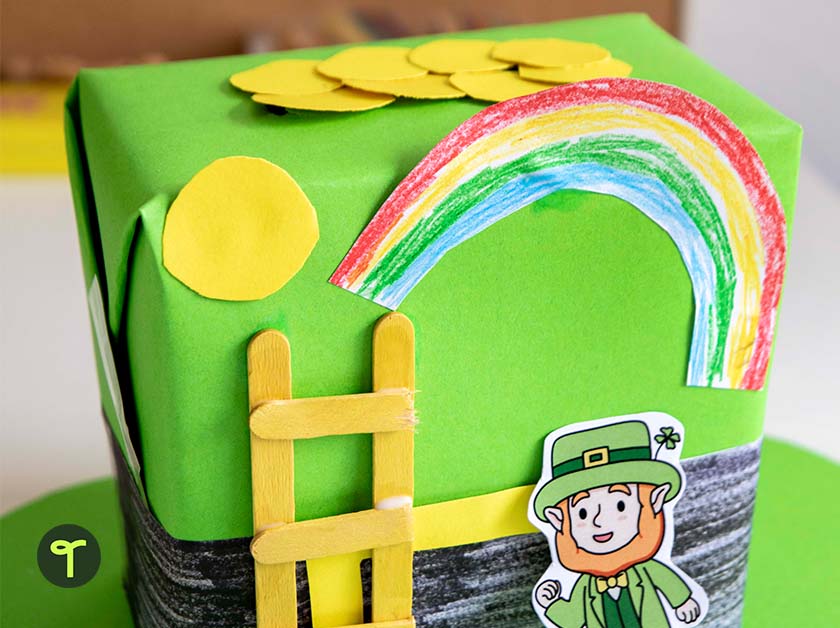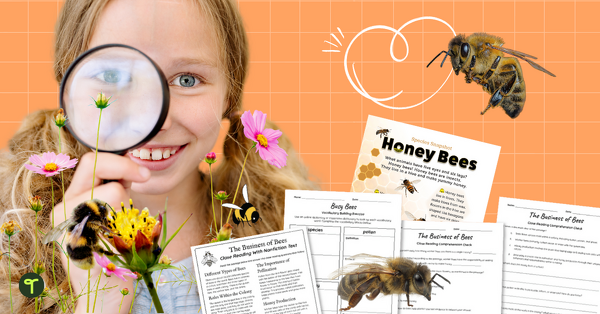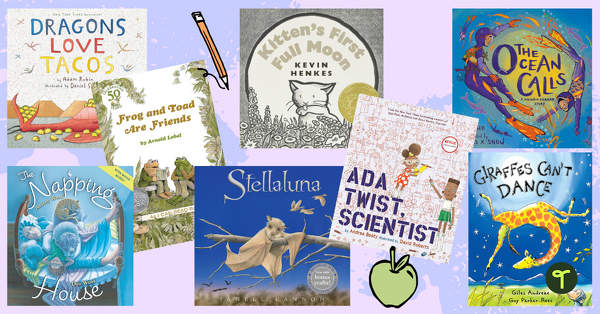Are you looking for a few fun St. Patrick’s Day facts to get your students ready to put on their green and hunt for leprechauns?
The Teach Starter teacher team has compiled the perfect list of fun facts about Saint Patrick and the March holiday who bears his name. You can use them to spark morning meeting discussions, add to your “fact of the day” whiteboard posting, engage students with some St. Patrick’s Day trivia and plenty more!
Read on for the answer to students’ burning questions like “why do we wear green on St. Patrick’s Day?” and “what’s a leprechaun?”
Fun St. Patrick’s Day Facts for Kids
Here are a few favorites of our teacher team!
1. Saint Patrick — for whom the holiday is named — was not actually Irish. He was born in Great Britain and kidnapped by Irish raiders who took him Ireland and forced him to live in slavery.
2. People talk a lot about being lucky on St. Patrick’s Day. That’s because Irish people are said to have “the luck of the Irish,” meaning they’re inherently lucky! (This fun lucky clover activity puts a social emotional spin on the day!)
3. Why do we wear green on St. Patrick’s Day? The color green is one of the three colors on the Irish flag, and the country is often referred to as the Emerald Isle.
4. Wearing green clothing on St. Patrick’s Day is sometimes called “the wearing of the green.” The saying comes from The Wearing of the Green, an Irish street ballad that laments how supporters of the Irish Rebellion of 1798 were repressed.
5. If you get pinched on St. Patrick’s Day, folklore says you can blame it on a leprechaun. To prevent getting pinched, make sure you wear something green!
6. Speaking of … what is a leprechaun? Leprechauns are mythical creatures in Irish folklore who are said to be mischievous little men who hoard pots of gold.
7. The Shamrock is one of the most famous symbols of St. Patrick’s Day, so what is it? Shamrocks are a special type of clover that has only three leaves. These little green plants can be found all over Ireland.
8. Rainbows are a popular St. Patrick’s Day symbol because leprechauns are said to hide their pots of gold at the end of the rainbow.
9. Parades are often associated with St. Patrick’s Day, but the truth is, this isn’t an Irish tradition!
10. According to Irish folklore, if you catch a leprechaun, he must grant you three wishes in exchange for his release.
11. The first St. Patrick’s Day parade was not in Ireland. The residents of St. Augustine, Florida claim to hold that honor. Their St. Patrick’s Day parade is said to have occurred in the year 1601.
12. The largest St. Patrick’s Day parade in the world happens in New York City. More than 2 million go to the city to celebrate every year!
13. Irish immigrants brought St. Patrick’s Day to America in the late 1700s and early 1800s.
14. Many famous landmarks around the world, such as the Empire State Building, the Great Wall of China, and the Colosseum, are lit up in green to celebrate St. Patrick’s Day.
15. St. Patrick’s Day is celebrated around the world, and even in outer space. It’s been marked several times on NASA’s International Space Station.
16. According to Irish legend, St. Patrick chased all the snakes out of Ireland and into the sea, but in reality, Ireland has never had any snakes.
17. Everyone is said to be Irish on St. Patrick’s Day, but maybe you really are? One in 10 Americans have Irish heritage.
Bring home the gold with our favorite St. Patrick’s Day STEM Activity: Building a Leprechaun Trap!
How Do You Say Happy St. Patrick’s Day in Irish (Gaelic)?
It’s not a fact, per se, but here’s one more fun holiday tidbit to share with your class! In Ireland, many people speak multiple languages, including English and Irish (known as Gaelic in Ireland) which are both official languages of the Republic of Ireland.
If you want to wish an Irish person Happy St. Patrick’s Day in Gaelic, you’ll have to say “Lá Fhéile Pádraig Sona Duit.” It’s pronounced, “Law Ale-yeh Pawd-rig Sunna Ditch.”
St. Paddy’s or St. Patrick’s?
We’ve got just one more fun fact for your class!
If you want to shorten the name of the holiday, it’s called St. Paddy’s Day, not St. Patty’s Day. This is because the name Patrick is actually Padraig in the Irish language!











Comments